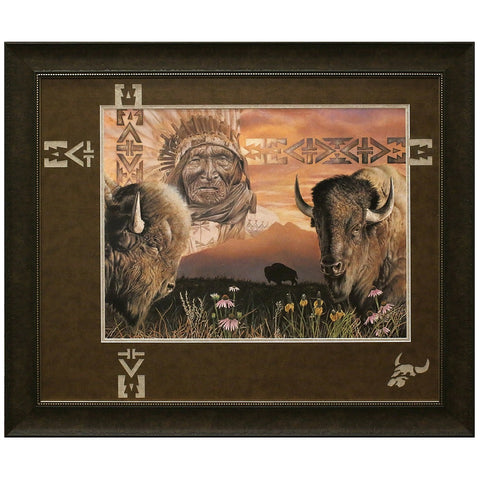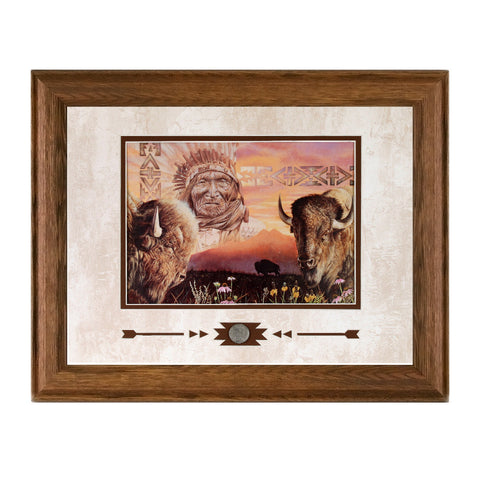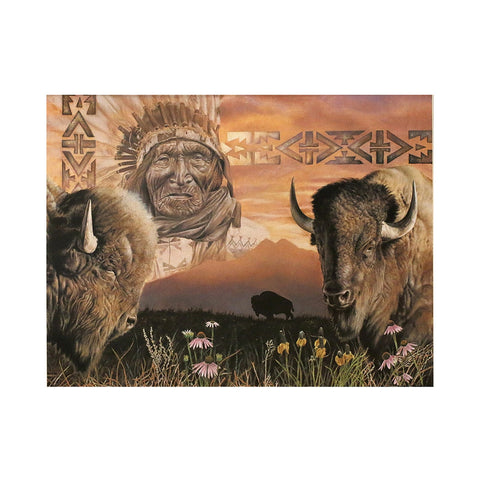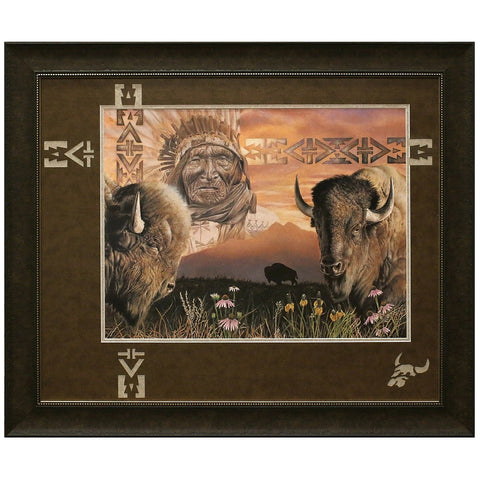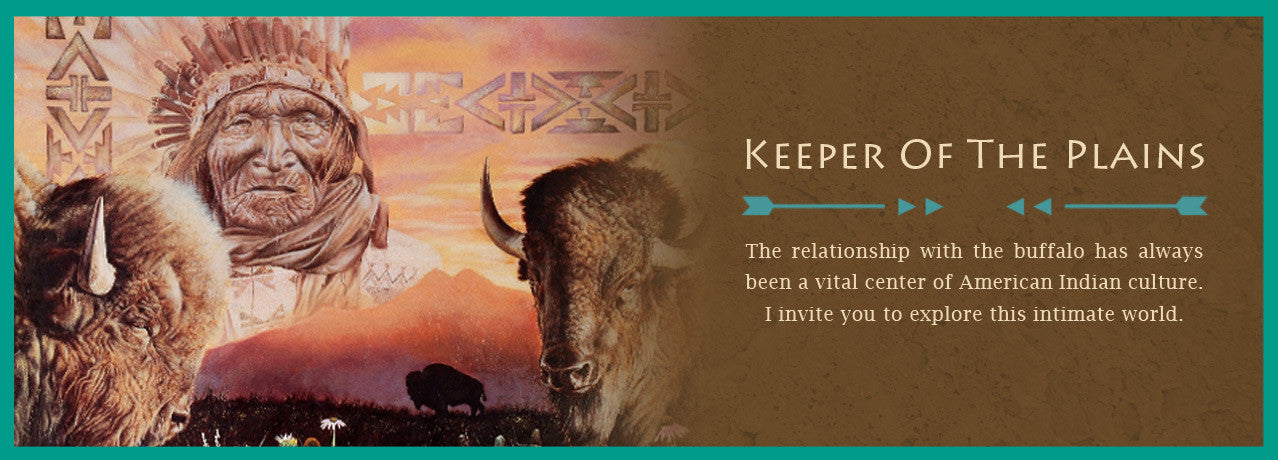
Keeper of the Plains
Tracing the span of all human history the closest kinship that has existed between man and beast would undeniably be that of the Native American and the buffalo. So sacred was this relationship that when interviewed by a reporter a warrior of the northern plains was quoted as saying, "the great Father of Life who made us and gave us this land to live upon, made the buffalo ...to afford us sustenance."
At the dawn of European arrival herds of buffalo covered the face of North America. Its numbers estimated upwards to one hundred million. Although the quantity of the herds were plentiful Native Americans learned to be very thorough with the buffalo after a kill. In fact where was almost no part that the Plains Indian nations did not use. As for the edible usages of the buffalo, the tongue, meat and liver were main staples in their diets as well as a high-energy pulp called pemmican that was made from dried meat and berries. Hooves were boiled down to make glue. Hides had many purposes; tepee covers, blankets, leggings, robes, dresses, moccasins, shields and drums. The stomachs were used as water pouches and cooking pots. The tendons and sinews were used as bows and sewing thread. Horns were used for cups, spoons, ladles, and headdresses. Bones were used as utensils, tools, knives and arrowheads. Even the dung was used for fuel.
It is no wonder why the famous Oglala Sioux chief Red Cloud said that the buffalo "...was a sacred gift from the Creator." As described with the heartfelt words of America's first people there was no other way to define this sacred relationship except that is was graciously bestowed upon them from the hand of God Almighty. In His kindness and perfect provision, He not only gifted Native Americans with the buffalo to sustain them, but like the buffalo He willingly gave His life for all nations. Truly and forever He is Keeper of the Plains.

